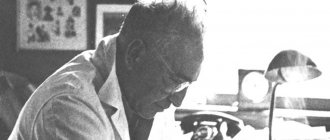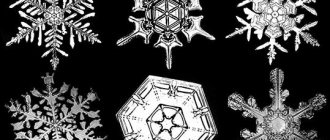Crowd psychology studies the differences between the behavior of individuals in a mass gathering of people and in relative solitude. This section of social psychology is relevant for study, since mass gatherings of people can be dangerous and unpredictable.
A crowd is an organism that has a heart, rhythm, and breathing. When a large group of people is driven by one emotion, one goal, it is almost impossible to manage it. Crowd behavior attracts attention not only because of its characteristics, but also because of the risk of injury. History knows many cases when people were trampled to death in a large crowd of people.
What are the features of crowd psychology, what are its signs and structural characteristics, types and methods of control - we will understand in this article.
The crowd from a psychological point of view
Human behavior has been studied since ancient times, and the psychology of crowds and riots has been and continues to be of particular interest.
Psychological characteristics of the crowd
The mass of people has enormous power that is almost impossible to control. This is its main psychological feature: each individual can be forced to obey, but it is extremely difficult to command a large group of people.
In some cases, large crowds of people can be controlled if people follow the leader. For example, a regiment of soldiers following their commander cannot be called a crowd. An unstructured gathering of many people is not comparable to disciplined soldiers obeying orders. However, a strong speaker who can gather followers is able to control them.
Another psychological feature is variability of opinion. Let's say a person holds certain views on family relationships in which the wife should stay at home and run the house. But he ends up at a rally in which they demand that women be allowed to work. It is possible that this person will pass by, but there is a high probability of falling into a raging crowd and supporting its interests.
Finding yourself in a crowd of people may be accompanied by a frantic desire to leave as soon as possible, since feeling someone’s touch, even accidental, can be extremely unpleasant. But there are also categories of people who like the social movement, and they are ready to constantly participate in such pandemonium.
The crowd effect in psychology is considered in some detail, and this phenomenon continues to be studied.
The phenomenon of mental contagion
The word "infection" is associated not only with physical diseases, but also with mental states. Thus, mental contagion is considered to be the transfer of emotional and psychological mood from one person to another. Sometimes transmission occurs from one person to hundreds of other people. The “infection” mechanism is chaotic and does not obey any laws. It can only be compared with empathy - emotional empathy.
Psychic contagion, like empathy, can be transmitted without personal contact between individuals. For example, a group of people watched a film about a spider attack and now they all feel as if someone is crawling on their body. This unusual state reaches extremes when ordinary suspiciousness develops into panic.
The integrative function of mental contagion is used to unite the team. For example, in the mornings at work, a planning meeting is held, during which management sets a positive mood for employees for the whole day. This function is also used to increase the suggestibility of people: groups are given convincing speeches by an agitator, and over time, all its participants begin to willingly believe every word.
The expressive function is used during public events. For example, an unstructured group of people gathers: each with their own emotions and experiences, problems and difficulties. The hosts of the holiday/meeting/concert infect those who come with a great mood and after 20 minutes the audience unconsciously sings along to the songs and moves to the beat of the music. When you get into a crowd, it is important to remain relevant and understand the purpose for which you came here.
Loss of rational control
Finding himself in a crowd, a person becomes infected with its mood. In this case, it absolutely does not matter what emotional state he had before joining the new society. A cheerful, relaxed individual, falling into an angry angry crowd, picks up screaming slogans and repeats after everyone. A gloomy and upset person, coming to a positive, joyful public, becomes infected with its positive attitude.
In other words, a person loses rational control over his mental and emotional state, easily succumbing to the influence of the majority. There is no clear understanding of how to avoid such compliance. The only thing that will prevent you from imitating the crowd is to avoid such crowds of people.
The loss of rational control is fraught not just with a change in mood, but also with serious consequences. An example is the ancient rituals of burning witches. Even a person who is confident in the woman’s innocence succumbs to everyone’s anger and actively throws sticks into the fire. After what happened, regret, sadness, despair can come flooding in - and all this is the influence of the crowd.
Each new member of the community increases the mass of the public and its destructive power, but it must come from somewhere.
How a crowd is formed
Crowd formation can occur in two ways: random and purposeful.
In the first case, a sudden event leads to pandemonium. This could be an accident, an attack, a performance by street performers, or a sale of goods at low prices. It is known that the major “Black Friday” promotion leads to the accumulation of masses of people at points of sale from year to year. Several times in the “herds” rushing towards discounts, people were trampled to death.
In the second case, the instigators of the pandemonium create a stir for a specific purpose. This could be raising money, a desire to attract attention, a desire to convey information to the masses.
Who does the crowd consist of?
At the heart of the crowd are the instigators who formed a cluster of people. This can happen unconsciously or purposefully. For example, an incident in the middle of the street attracts many onlookers, and the instigator did not plan a “show.” Or, on the contrary, several leaders have gathered in a crowded place and attract attention in various ways: a show, a bright performance, provocative slogans. It can be anything, the main thing is to gather people.
Thus, the crowd consists of the base and surrounding onlookers. In the event of a purposeful formation of a crowd, the leadership may be joined by individuals who share the voice of the instigators.
New members are constantly joining the crowd, increasing its strength. It is impossible to control this process, because an interesting event always attracts attention.
Stages of crowd emergence
A crowd is something chaotic and structureless. Its formation occurs in several stages.
1.Formation of the core of the crowd:
- instigators who purposefully came to gather people to attract attention or action;
- an event that attracts attention.
The more dynamic the activity of the core, the faster the audience grows. What makes a person join the masses is curiosity and specific goals, for example, participation in a rally.
2. Spinning.
When the public has formed, all its participants become more liberated and sensitive to information from the outside. This is due to the fact that if you behave provocatively, brightly, aggressively, no one will notice anyway. There are a huge number of people, so no one will pay attention to extraordinary words and actions.
3. New object of attention.
Initially, a crowd is formed by a certain event that is discussed within the group. The appearance of a new object of attention provokes an even greater unity of the gathered people, a new wave of development of the emotional state.
4. Activation of individual participants.
The tension created as a result of concentrating attention on a new object requires release. It is logical that some individuals cannot withstand the pressure and independently stimulate everyone around them to take action. As a result, such actions lead to various consequences, often negative.
These are phenomena of the same order and are united by the phenomenon of depersonality, social degradation and, at the same time, the enormous potential of animal power, which, skillfully, can be directed in any direction. Even if a crowd accomplishes a feat in one impulse, it is not driven by sympathy for a noble idea, but by the instinct of submission. After all, “ideas” are from the realm of reason, and the crowd does not have reason. Reason in a crowd is replaced by collective instinct, and human feelings are replaced by an indefinite, but extremely strong emotion, which can be transformed and colored depending on the circumstances. The constant thing about this emotion is that it requires an outlet, an outburst, a release.
Politicians have always used this energy of the crowd: by manipulating the collective instinct and emotions, the “leader” can direct the energy of the crowd to what he needs at the moment. An ordinary crowd of people, metro passengers, spectators in a cinema or “peaceful workers” who went out on a weekend to “walk” at a May Day demonstration can suddenly turn into an animal-like mass that can exist in an active state from several minutes to several hours.
***
“Crowd formation” can be influenced by people’s accumulated fatigue, alcohol and, as a rule, general nervousness, social tension, anticipation, readiness for some perceived danger or catastrophe.
I remember that as a child, I, a child of the 60s who had never seen war, shuddered and tensed every time I heard the rumble of a flying plane, expecting a bombing. Many of my peers confessed to me a similar reaction. At the same time, an interview was published with an American girl who visited the Soviet Union, who said that when she descended from the plane, she instinctively cowered, expecting that they would now start shooting at her.
The time of the Cold War has long passed, but in place of the old “horror stories” and “insanities” new ones have come: disaster films, show business, big-time sports, etc.. Psychological tension, cultivated by governments with the help of the media, makes it possible to activate the process of crowd formation in a matter of minutes.
Another reason that contributes to “crowd formation” is physical compression, the artificial bringing together of people in a crowd. In ordinary life, there is an invisible field around a person, felt as personal space
. This space allows a person to think and act consciously, as an independent rational being, an individual. But in a crowd, the capsule of personal space bursts, and the conscious part of a person’s personality, deprived of a protective shell, instantly “loses ground.” Neither developed intelligence nor high moral qualities will save a person from “infection with the crowd virus.”
When people were shown documentaries with their own participation, inside the crowd, they could not believe the authenticity of these films.
Unconscious
, which actually makes up 90% of our nature (but usually, among civilized people, is in a depressed, half-asleep state), at the moment of personal space rupture, immediately takes power “into its own hands” and begins to “save” us. So a faithful dog, barking and scratching, tries to “save” its peacefully swimming owner. The phenomenon of the crowd is that in the blink of an eye a person can turn from a highly developed personality into a meaningless herd animal, completely devoid of individuality, not aware of himself, not remembering the past, not even able to say his name. The human unconscious cannot assess the reality of danger (it cannot assess anything at all).
Therefore, the panic reaction of the crowd never
is not adequate to the real danger.
But physical strength increases many times over, and not only the strength of the crowd as a whole, but also the strength of each person individually, precisely because the body at this moment is controlled by 90% of our essence, and not the usual 10%. The feeling of this power and, moreover, the permissiveness and anonymity inherent in the moment when I is replaced by we, can turn a panicked
crowd into
an aggressive one
. The more the unconscious is suppressed in ordinary life, the stronger in the society of “starched collars” the pressure of rules and conventions, social regulation of a person’s external life, the deeper the primitive instincts are hidden, the more unsightly they appear in the crowd. (It’s not for nothing that English fans are considered the most aggressive and cruel throughout the world.)
The third prerequisite for crowd formation is the human need for socialization. A person manifests himself as a collective, social being already in the first years of his life. But the natural, original ability of a person to communicate, to jointly create, build and learn, is very far removed from the extreme manifestations of the “crowd spirit”. The crowd is the evolutionary regression of man to the level of a savage.
A miraculous monument glorifying this “spirit of collectivism” is the Russian folk song “Because of the Island to the Rod”. The inescapable popularity of this song is explained by the archetypal image of the princess - a girl sacrificed to the idol of the crowd. These sacrifices were made thousands of years ago, in primitive tribes, and will continue to be made until the Neanderthal man rules over homo sapiens.
***
A spontaneously arising crowd can last from several minutes to several hours, depending on the strength of the active cause of its emergence and on whether the crowd has a leader, a leader. For “crowd formation”, the presence of a leader is not necessary: rather, a hysterical cry at a certain frequency, sounded at the moment of general “freezing”, maximum confusion of people, a critical point, when it is still possible to prevent the process or choose where to direct it, will play a role. But when it was already heard “hey!” or “save yourself, whoever can!”, appealing to reason and decency is already pointless and dangerous - they will sweep away, trample, tear apart.
The colossal energy of the unconscious, and, moreover, strengthened many times over by the emotional resonance of a large number of people, requires an outlet, a splash, an explosion. It is impossible to turn a tsunami in the opposite direction or hide the blast wave back into a small box after the detonator has been triggered.
At this moment, there are two different possibilities for controlling the element. The first is to return the crowd to the “freezing point”, for example, by opening fire: the crowd, out of surprise, will freeze again for a moment, like a hare in the beam of car headlights - and at this moment it is possible to shout instead of “save yourself who can” - “people with medical education - all come to me!” In this way, people will be able to identify themselves according to their professional background and will cease to be a crowd; the crowd will be broken, cut into pieces on the breakwater. In addition, the crowd will thus change its structure, the physical distance between people will change, personal spaces will be restored and people will have the opportunity to be aware of their actions. But only a trained professional who has good control of his voice, timbre, intonation, and has considerable internal strength and confidence can act this way.
Another opportunity to control a crowd is, using the “frequency” of its own resonance, to further strengthen it and lead the crowd along with you “to a feat.”
This requires a different kind of professionalism; Having received a leader, direction, goal, the crowd increases its “lifespan” compared to an uncontrollable crowd. Like any creature, the crowd wants to extend its lifespan, and therefore seeks a leader, longs to submit to force and authority. And it is much easier to control such a “creature” (contrary to rumors about the uncontrollability of a crowd) than a conscious social structure: the crowd is not capable of critical assessments, either of its own actions or the actions of its leader. Tina Georgievskaya psychologist, voice coach.
read other articles on the topic “Crowd”
Types of Crowds
The author of the concept known as “crowd psychology” is Gustave Le Bon. The concept of the “collective unconscious” was first proposed by Carl Jung, and after him other scientists began studying the phenomenon: Sigmund Freud, Elias Canetti, Gabriel Tarde.
The book on crowd psychology was written by Le Bon in 1984, but the information in it remains relevant to this day.
Types of crowds in social psychology are considered from different points of view. There are several main varieties, we will consider them further.
By degree of activity
The mass of people, characterized by the degree of activity, can be active and passive:
- an active crowd is a group of emotionally excited individuals who are ready to take action;
- the passive crowd is the less emotional members of the group who do not show zeal for action and further serious steps.
A passive crowd is easy to control because people in it do not show activity, although at the same time they can experience strong emotions.
By the nature of emotionality
Every gathering of people is characterized by common emotions. Among them:
- delight (concert, holiday, fair);
- panic (accident, fire, earthquake);
- aggression (rally, picket).
An enthusiastic crowd is less dangerous than an aggressive one, but the greatest threat is a panicked crowd. In this case, people indiscriminately run in different directions to escape danger. Injuries and injuries are common in this group.
According to the degree of spontaneity
A crowd is a spontaneous phenomenon in itself, but it is different and divided into an organized and a led group.
An organized mass of people often acts within the framework of a plan. For example, a festive procession on the Spring and Labor Day on May 1st or the “Immortal Regiment” on Victory Day. Such a group is easy to manage because it has gathered for specific purposes.
A led crowd of people is formed as a result of instigators, to whom the participants subsequently obey. If the leader stops the actions that excite the crowd, the spectators and onlookers will simply have to leave, since there will be nothing left to see.
How to control a crowd
Crowd management is a complex and unpredictable process. If it is an organized passive mass of people performing actions according to an algorithm, it is not difficult to control it. If the pandemonium formed spontaneously and is aggressive or panicky in nature, it is almost impossible to stop it.
Like any psychological phenomenon, crowd psychology is used to achieve personal interests by the instigators. Such interests may include:
- instilling one's own opinion;
- selling goods or collecting money;
- attacking people;
- destruction and vandalism;
- call to action.
The study of crowd types in psychology allowed scientists to highlight some features that provide tools for managing a large public.
- Demonstration of strength and power. Lost in the crowd, a person instinctively begins to search for a strong participant. An unstructured, spontaneous gathering of people is quite primitive in nature, so the demonstrative use of force and authority helps to establish control over a group of people.
- Expressiveness of performance. People who accidentally find themselves in a mass gathering are looking for an object of attention, a leader they can trust. Often this is an expressive individual who loudly declares his opinion and clearly expresses his emotions.
- Informative speeches. An excited public demands action, not eloquent statements that make no sense. With the help of correctly selected slogans, the mood of the crowd can be adjusted and directed in the right direction.
When choosing a leader who can pacify a crowd, it is important to consider his oratory skills. More often than not, it is the right words that help to cope with tension in the crowd.
Who makes up the crowd: the role of the leader
Crowd
The basis of a crowd is always the instigators who form a crowd of people. This can happen deliberately or accidentally. For example, any incident can attract a large number of onlookers; in such a situation, the instigator does not plan to gather people around. Or vice versa, one or more leaders begin to attract people's attention in various ways, for example: provocations, shows, performances. Who does the crowd consist of? What is the role of a leader?
- The crowd almost always consists of random passers-by and the base.
- In situations where the crowd is formed purposefully, the leaders can be joined by trained people who share their opinion.
- The crowd is constantly replenished with new people who increase its strength. This process cannot be controlled because curious incidents attract people.
- The role of a crowd leader is to create belief in something . This is the main reason for his great influence.
The key indicator that determines the strength of a leader's influence on the crowd is charm. This is the quality that is the dominance of a person over the mind of another person.











